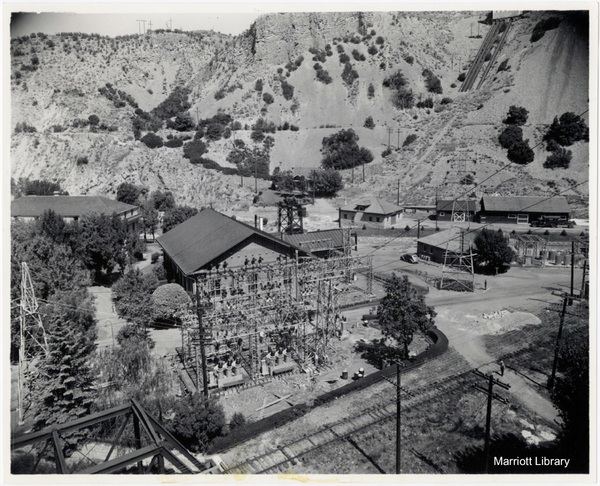Dublin Core
Title
Description
We take it for granted now, but electricity was a hot commodity in the late 19th century! Utah’s rural towns were growing quickly and required affordable, dependable energy. Eager to meet the growing demands, power companies competed for business with lower prices and new technologies. Seeing an opportunity for profit, entrepreneur Lucien Nunn decided to harness local water sources to provide electricity to many rural Utahns.
Nunn started the Telluride Power Company in Colorado before deciding to move his business to nearby Utah, where interest in hydroelectricity was emerging. Utahns were already familiar with hydropower in the form of watermills, age-old technology that uses the motion of flowing water to turn a large wheel to power basic machinery. Nunn’s technology, however, diverted water from a stream and directed the flow through a series of flumes that allowed water pressure to build up. As the pressurized water forced its way from the pipe, it turned turbines inside a powerhouse, creating electricity.
In 1897, Nunn built his first hydroelectric power plant along the Provo River. Featuring the first high-voltage, long-distance, alternating power transmission system of its kind, the demand for power from Nunn’s Station quickly outpaced the size of the operation. Rather than expand, Nunn built another power plant nearby. The new Olmsted Power Plant boasted a laboratory, offices, and a school for electrical engineering students. The complex system made lives for many Utahns significantly more convenient, and the success encouraged Nunn to build more plants throughout the state. The results of his work were revolutionary, both in terms of electrifying the rural West and educating a class of emerging engineers.
The popularity of hydropower declined in the second half of the 20th century, due in part to the development of other forms of electric power generation. The Olmsted Plant saw many transitions over the years, but since 1987 its primary function was supplying culinary water for Salt Lake and Utah Counties. Decommissioned in 2015, the site is set to start a second life as a museum, celebrating the legacy of Lucien Nunn’s entrepreneurial spirit and dedication to hydroelectric power.
Creator
Source
_______________
See Central Utah Water Conservancy District, “Olmstead History: A Historic Connection”; “Electrifying Utah - Engineer Lucien L. Nunn”, History Blazer, May 1996; Hugh Lovin, “Lucien Nunn, Provo Entrepreneur, and His Hydropower Realm in Utah and Idaho,” Utah Historical Quarterly 76, no. 2 (2008): 132-47; Jed Boal, “New Olmsted Power Plant, Museum Opening at Provo River,” KSL TV (Salt Lake City), September 12, 2018; United States Bureau of Reclamation, “Hydropower Program: The History of Hydropower Development in the United States,”Hydropower Program | Bureau of Reclamation (usbr.gov); “Restoring Utah’s Historic Olmsted Power Plant,” Hydro Leader Magazine, May 11, 2021; Utah Division of State History.Olmsted Hydroelectric Power Plant. Salt Lake City: Utah Division of State History, Preservation Section, 2020.

